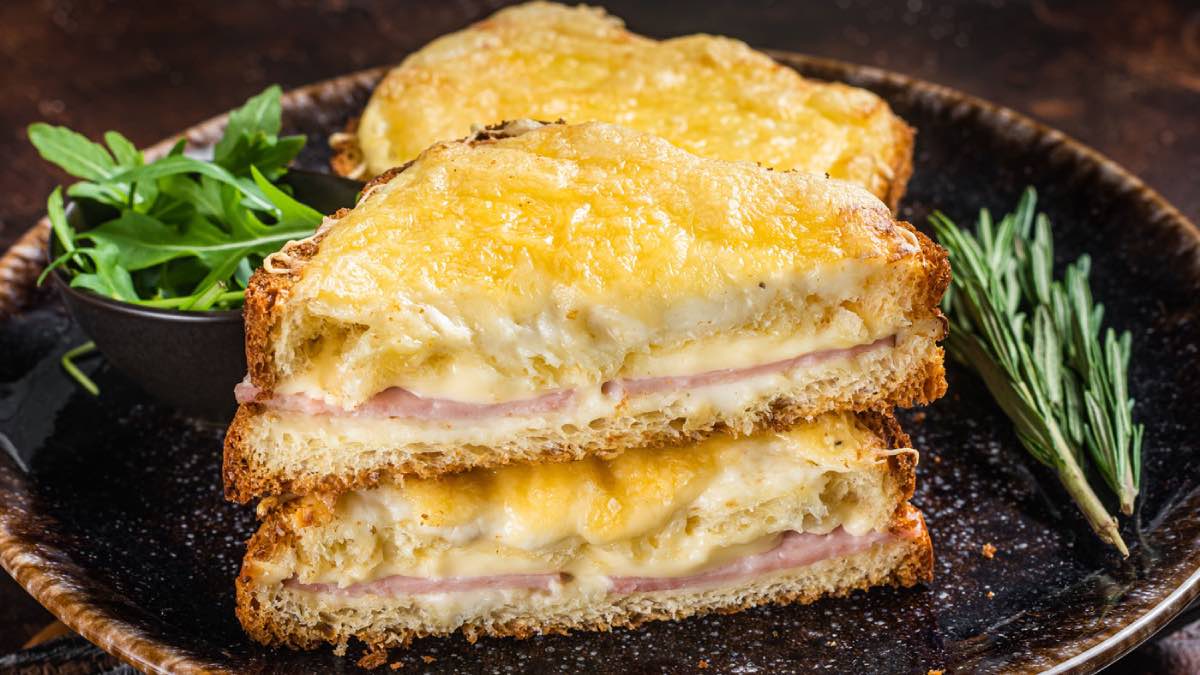Click here to read the Spanish version.
It is one of the most popular and recurrent meals. The sandwich offers you as many possibilities as you have imagination. You can make a sandwich with almost any ingredient you can think of, but there is also a list of legendary sandwiches that you can use to satisfy your appetite, whether for breakfast, lunch, lunch or dinner, it goes for everything.
Although in Spain ‘bocadillo’ is strictly “an open piece of bread, or a set of two slices, inside which some food is placed or spread”, in other parts of the world it is usually called ‘sándwich’ (which in Spain we would only call those made of sliced bread), ‘torta’ or ’emparedado’, among many other names. Whatever the case, here are 13 sandwiches from around the world to take you on a gastronomic journey through bread. Which other legendary sandwich would you add to the list?
Squid Bocata
In the Spanish popular recipe book, the bocadillo occupies an important place. In fact, it could be the subject of a separate article. We could also highlight the potato omelette sandwich or the serranito, but without a doubt, the squid sandwich is one of the most traditional. Its preparation is very simple: bread with battered squid, with mayonnaise or aioli or just on its own. Despite the fact that Madrid has no sea, this sandwich is very typical of the capital and its origin dates back to the 18th century, although there are different theories that place it some centuries earlier. At that time it was difficult to bring fish from the coast to the city centre, as it often arrived in poor condition. Special permits were requested so that it could arrive more quickly and in better condition.
It ended up becoming a very popular food. Today it is an emblem of the capital and in places like the Plaza Mayor you can try some of the most famous ones, such as those at the Cervecería La Campana.
Veal Pepito
Another of the most popular sandwiches in our country. It is also one of the simplest: it consists mainly of a grilled fillet of beef on French bread. Although nowadays there have been numerous versions with more ingredients such as pepper, tomato or cheese. Its origin, as in most cases, gives rise to numerous theories, but the main one is that it originated in the Café Fornos in Madrid at the end of the 19th and beginning of the 20th century. There, a boy called Pepito – it is said that he was a relative of the founders of the house – ordered a hot sandwich that caused a furore among the rest of the clientele and ended up becoming one of the most typical sandwiches. At Santerra Neotaberna you can try their own version of this classic.
Pastrami
The main ingredient of this popular sandwich is pastrami, a beef meat cured in brine and smoked. It originated in Eastern European countries and was brought to the United States by immigrants. It became popular in Jewish delis in New York in the late 19th century. It became one of the favourite dishes in these establishments and has become almost iconic. Although the original recipe calls for rye bread and is served with mustard, pickles and cheese, there are now many variations. In Madrid, you can try it in places like Katz.
Lobster Roll
This ‘lobster roll’ originates from New England (United States), specifically from places like Maine. The bread used is similar to hot dog bread and is usually filled with butter, lemon juice, salt and black pepper or mayonnaise. Of course, the star ingredient is lobster, served in large chunks. Sometimes celery or spring onions are also added.
As for its origin, according to the ‘Encyclopedia of American Food and Drink’, the first Lobster Roll was served at Perry’s Restaurant in Milford (Connecticut), almost a century ago. It then spread in popularity throughout the area. It is a popular summertime snack. In parts of New England, and even in parts of Canada, even McDonald’s often sells Lobster Rolls during the summer season. In places like The Lobstar (Madrid) you can try the original recipe and a lot of delicious proposals.
Club Sandwich
Who doesn’t know this classic among classics? A sandwich on toasted bread, in two layers and filled with turkey (or chicken), bacon, cheese, lettuce, tomato and lots of mayonnaise. Accompanied by fried fries. There are various theories as to its origin, but it is said to have originated in the late 19th century at the Union Club in New York. You can try it in most coffee shops.
Bánh mì
You have to travel all the way to Vietnam to find the original recipe for this snack served in a short, thin-crusted baguette and filled with meats and vegetables such as bò kho (pork stew), cha lua (pork sausage), coriander, cucumber, pickled carrots, beef and other ingredients such as curry. Bánh mi’ literally means ‘bread’. The baguette was introduced to the country in the mid-19th century and years later became a staple food. After the Vietnam War, this Vietnamese sandwich became popular in countries such as the United States and Canada, and became a much sought-after delicacy. In Madrid, one of the trendiest places for this type of sandwich is in La Latina, called B-Good Madrid.
Croque-Monsieur
It’s a gastronomic emblem of France and, once again, it’s a fairly simple recipe. This classic sandwich is made of sliced bread, gruyere (or emmental) cheese and cooked ham. Some also add béchamel or butter. The secret is to heat it on the griddle and serve it au gratin. If you add a fried egg on top, it becomes a croque-madame. Although its origins are once again unclear, it could date back to the end of the 19th century.
Francesinha
This sandwich is typical of Portugal, specifically Porto. In terms of its composition, the francesinha has sausage, chorizo, ham, sausages and beef fillet (although some places serve the ‘normal’ one without the fillet). It is topped with melted cheese and dressed with tomato sauce. It is a variation on the Croque-Monsieur, hence the name. It is a sandwich usually served in cafés with fries.
BLT Sandwich
It is one of the most typical sandwiches in the United States. The premise is again simple, but the result is a delicious sandwich. It has only three ingredients: bacon, lettuce and tomato (hence the name BLT). The juiciness is provided by mayonnaise and good sliced bread. In the early 20th century there are some references to a similar recipe in various books such as the ‘Good Housekeeping Everyday Cook Book’, which includes a sandwich with bacon, lettuce, tomato, mayonnaise and a slice of turkey. Its definitive explosion in popularity came after World War II and it is now one of the favourite sandwiches of Americans.
Choripan
This snack is an Argentinean icon and its name is quite literal: a roasted chorizo between two pieces of bread. This deep-rooted tradition among Argentines (and also Uruguayans and Chileans) dates back to the 19th century, when gauchos in rural areas began to eat it. Later, its popularity spread to urban areas and it became a gastronomic emblem of street food. It is usually seasoned with the typical chimichurri sauce. In Madrid you can try it in more and more places, such as La Choripanería, in the Lavapiés neighbourhood.
La Mitraillette
Simplicity is the secret of this typical Belgian dish. It is nothing more and nothing less than a sandwich (usually half a baguette) of meat cooked with fries and gravy. It originated in the interwar period, the first half of the 20th century, in the city of Charleroi. If you want to try an authentic Mitraillette, you must visit Fritland in Brussels.
Cubano
It is a variant of the ham and cheese sandwich, which originated in the late 19th and early 20th centuries, due to the ease of travel between Cuba and Florida at that time, although as always, there are different theories about the real origin of the popular sandwich. The same goes for the characteristic ingredients. The main one would be Cuban bread (similar to the baguette but with some differences in the preparation and ingredients). Butter, yellow mustard and layered meat (roast pork, glazed ham and salami) are also included. Finally, there is Swiss cheese and thinly sliced gherkins to finish it off. The last step is to grill it to give it a crunchy touch and melt the cheese. In a previous article we explained how to prepare the Chef’s Cubanito.
Chivito
The chivito is an original Uruguayan sandwich with churrasco, mozzarella, ham, tomato, mayonnaise and olives. Its name comes from the term ‘chivo’, which means kid. It is said to have originated in the middle of the last century in a restaurant in Punta del Este when an Argentinian woman asked for a goat sandwich, but the restaurant had no goat meat left and put veal in it. In our country, chivito is also very popular in the Valencia area, especially for typical lunches. Although the recipe is different: here it has pork loin, grilled bacon, melted cheese, fried egg, lettuce, tomato and mayonnaise. For the local version, you can try it in Valencia at Bar Mistela.
The list could be infinite, including Kebab, Arepa, Hamburger, Reuben, Roast Beef, Katsu Sando… So we’ll have to make a second part. You can also take the route to try the El Paquito sandwich in Madrid.



